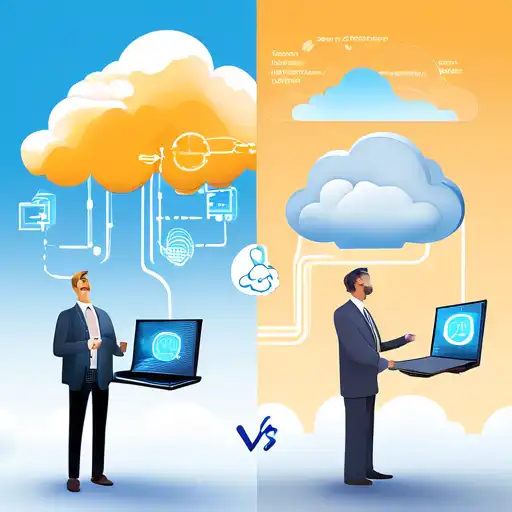Introduction to Edge and Cloud Computing
In the rapidly evolving world of technology, understanding the differences between edge computing and cloud computing is crucial for businesses and individuals alike. Both technologies play pivotal roles in data processing and storage, but they cater to different needs and scenarios.
What is Cloud Computing?
Cloud computing refers to the delivery of computing services—including servers, storage, databases, networking, software, analytics, and intelligence—over the Internet ('the cloud') to offer faster innovation, flexible resources, and economies of scale. Users typically pay only for the cloud services they use, helping lower operating costs, run infrastructure more efficiently, and scale as their business needs change.
What is Edge Computing?
Edge computing, on the other hand, is a distributed computing paradigm that brings computation and data storage closer to the location where it is needed to improve response times and save bandwidth. The goal of edge computing is to process data near the edge of your network, where the data is being generated, instead of in a centralized data-processing warehouse.
Key Differences Between Edge and Cloud Computing
While both edge and cloud computing are used to store and process data, they differ in several key aspects:
- Location of Data Processing: Cloud computing processes data in centralized data centers, whereas edge computing processes data locally, on the device or a nearby server.
- Latency: Edge computing significantly reduces latency because data doesn't have to travel over a network to a data center or cloud.
- Bandwidth Usage: By processing data locally, edge computing reduces the amount of data that needs to be sent over the network, thereby saving bandwidth.
- Security: Edge computing can offer enhanced security for sensitive data by keeping it closer to its source and reducing exposure to potential threats during transmission.
When to Use Edge Computing vs. Cloud Computing
The choice between edge and cloud computing depends on the specific needs of a project or application. Cloud computing is ideal for applications that require vast storage and computing power, such as big data analytics and machine learning. Edge computing is better suited for applications that require real-time processing and low latency, such as autonomous vehicles and industrial IoT.
Conclusion
Both edge computing and cloud computing have their unique advantages and are suited to different types of applications. Understanding the key differences between them can help businesses and individuals make informed decisions about which technology to use for their specific needs. As technology continues to evolve, the lines between edge and cloud computing may blur, but their core differences will remain relevant.
For more insights into the latest technology trends, check out our technology trends section.
